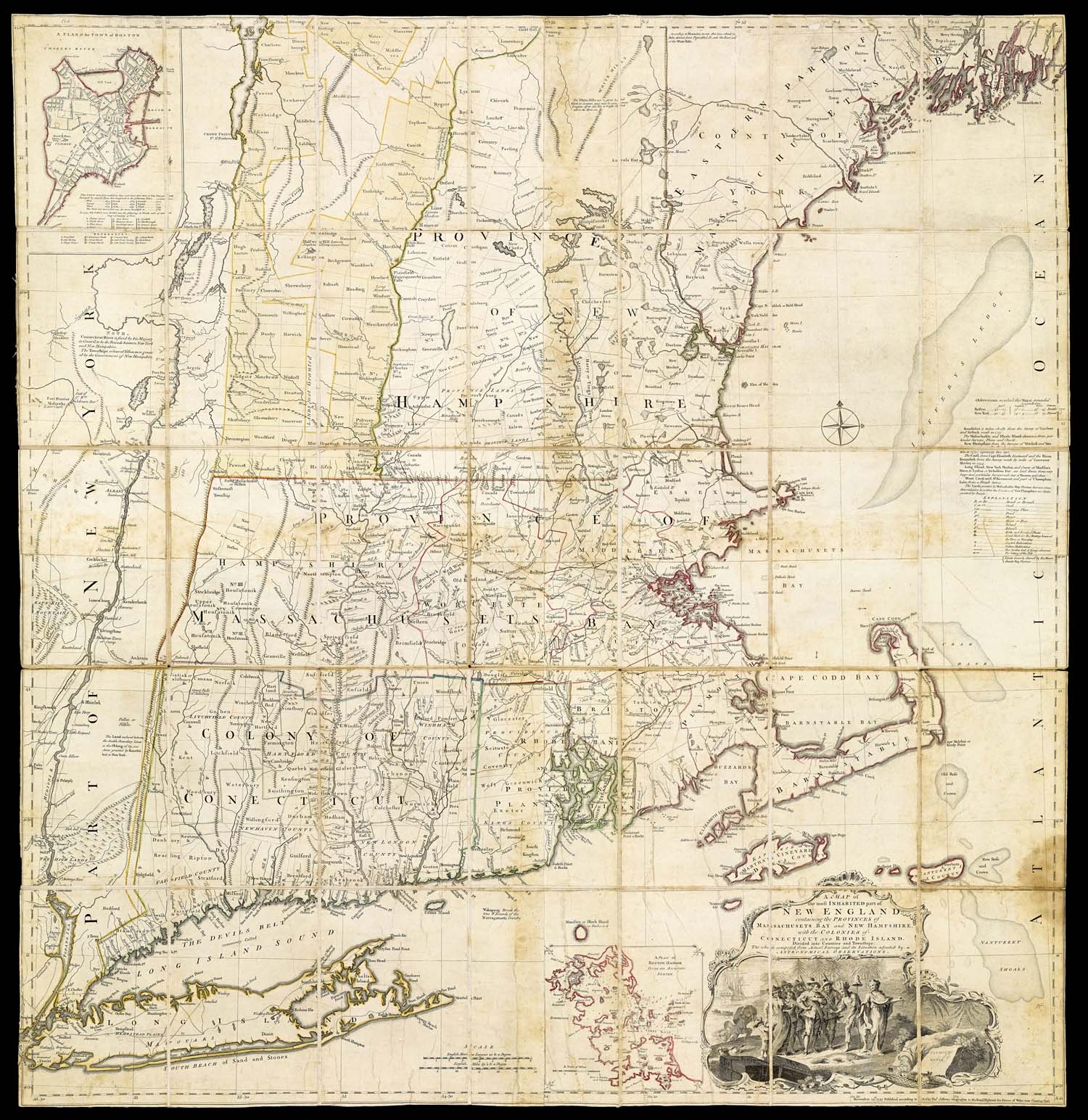Designed by the elusive John Green (Edney 2012a), and first published in London in 1755, this work provided the model for maps of New England for the rest of the eighteenth century (McCorkle 2001). In the tense years leading up to the Revolutionary War, the French recognized the Patriots as their allies and seized the opportunity to impose on British land. Green’s map represented and affirmed British claims in New England.
Earl, Hugh Percy, a prominent British general during the American Revolution, used this particular impression of Green’s map for military planning. This impression is the fourth of six variants and was first printed in 1768 (Edney 2012a, secs. “Provenance and Dating” and “Publication History”). It is not detailed or large enough to have been used for precise tactics. Instead, Percy used it to visualize a more comprehensive military strategy. The careful annotations in pencil and ink date between 1774, when Percy arrived in Boston, and March 17th, 1776, when the British evacuated the city (although it was not necessarily Percy who made the annotations) (Edney 2012b). Because the map is missing several roads, Percy had to use a guide to create alternative routes. However, his plans were never used, and the British commanders “sat behind their fortifications, protected by their ships’ guns, for nine months after Bunker Hill before finally evacuating the city” (Edney 2012a, sec. “Military Mapping”). The British had failed to execute Percy’s extensive plan, and their humiliating defeat forced them to march back to Boston. By 1780, the British had learned that they were vulnerable away from naval support.
John Green
A Map of the most Inhabited part of New England containing the Provinces of Massachusetts Bay and New Hampshire, with the Colonies of Connecticut and Rhode Island, Divided into Counties and Townships: The whole composed from Actual Surveys and its Situation adjusted by Astronomical Observations
Thomas Jefferys: London, 1768
Copper Engraving
Osher Collection


